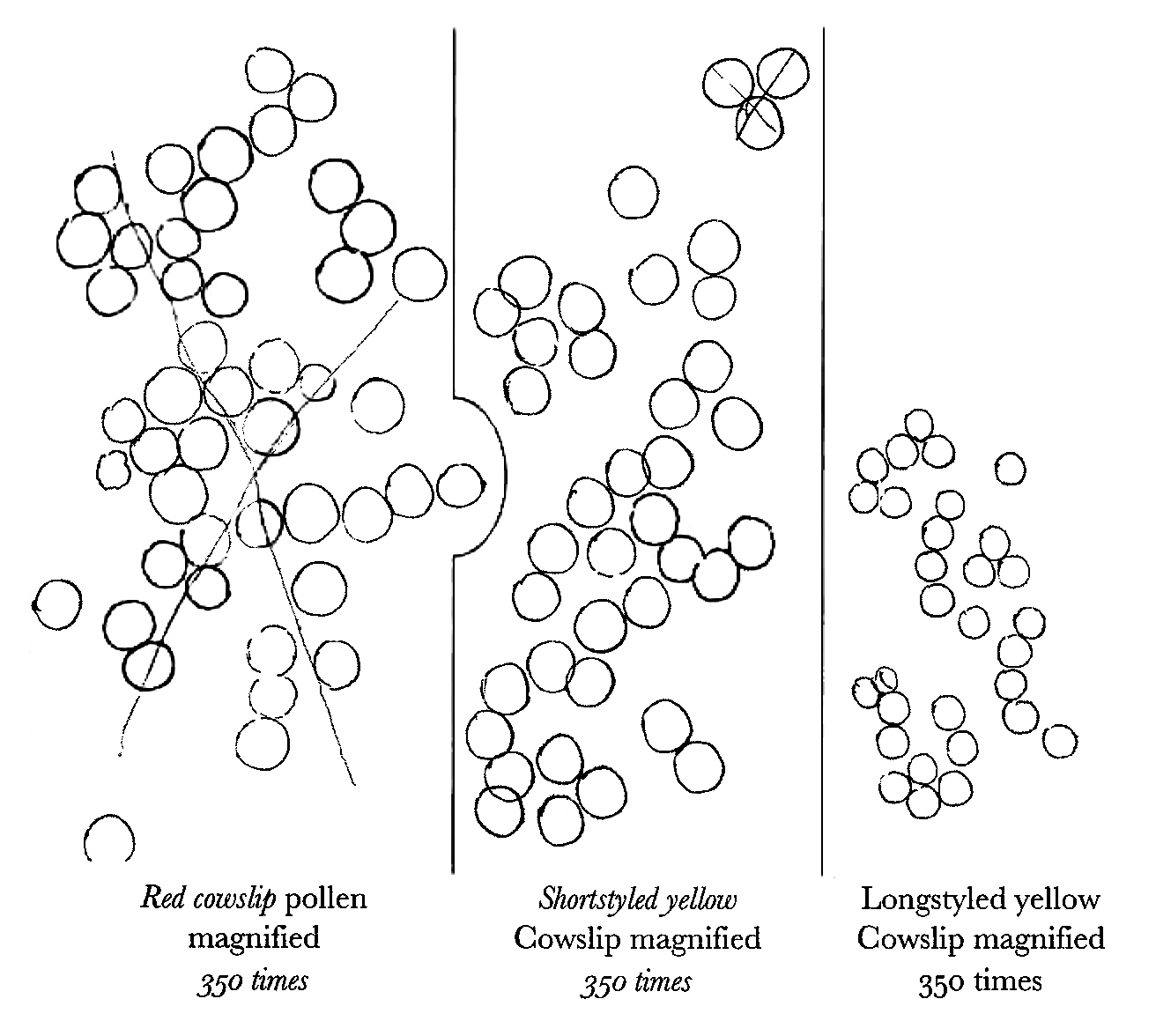From W. E. Darwin [30 April 1864]

CD annotations
Top of page: ‘April 30th 1864’ ink
Below sketch of red cowslip pollen: ‘Mid-styled i.e. style just below & touching anthers— a seedling from J. Scott plant—’2 ink
The sketches are reproduced at 33 per cent of their original size.
William sketched pollen of the long-styled and short-styled forms of the cowslip (Primula veris), as well as an equal-styled, or mid-styled, red variety. The red cowslip, sometimes called equal-styled by CD, was grown from seeds that John Scott had sent from Edinburgh in 1863 following his experimental work with the plant (see Correspondence vol. 11, letter to John Scott, 1 and 3 August [1863] and n. 13). CD was keen to work with the red cowslip partly because Scott had suggested this non-dimorphic form was a ‘new and distinct species’ (Scott 1864a, p. 108), that is, sterile when crossed with its parent forms; Thomas Henry Huxley had argued that a new species produced by selective breeding was needed as proof of the theory of natural selection (see T. H. Huxley 1863b, p. 107; Correspondence vol. 10, Appendix VI; Correspondence vol. 11, letter from John Scott, 21 May [1863] and n. 10; and this volume, letter to John Lubbock, [1 January 1864] and n. 4). See ‘Illegitimate offspring of dimorphic and trimorphic plants’, pp. 426–30, and Forms of flowers, pp. 234–8.
In another sketch of pollen from the same three forms of cowslip, the grains are smaller (though the magnification is not given) and more angular, suggesting that they were sketched while dry (see memorandum from W. E. Darwin, [after 19 May 1864]). Fold-marks and pin-marks indicate that the two sketches had been attached to each other and represented at least two of William’s sketches of dry and wet pollen.
For CD’s ongoing work on the relationship between oxlips, cowslips, and primroses, eventually published in ‘Specific difference in Primula’ and Forms of flowers, pp. 55–75, see the letter from John Scott, 7 January [1864] and nn. 15 and 16.
Please cite as “DCP-LETT-4478,” in Ɛpsilon: The Charles Darwin Collection accessed on